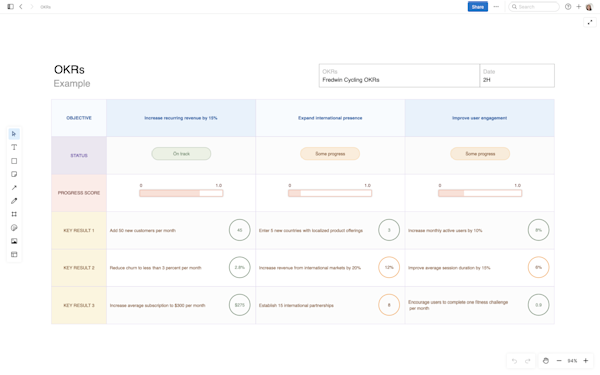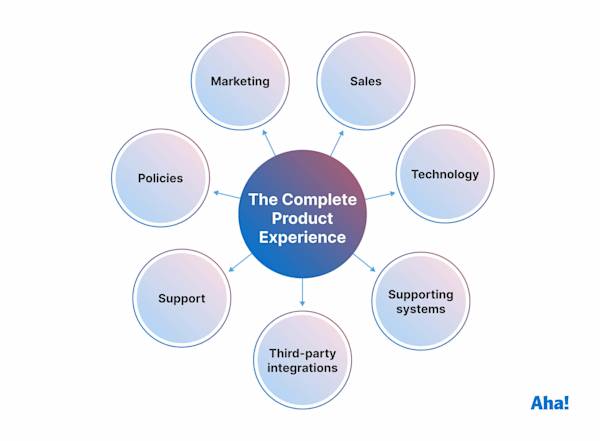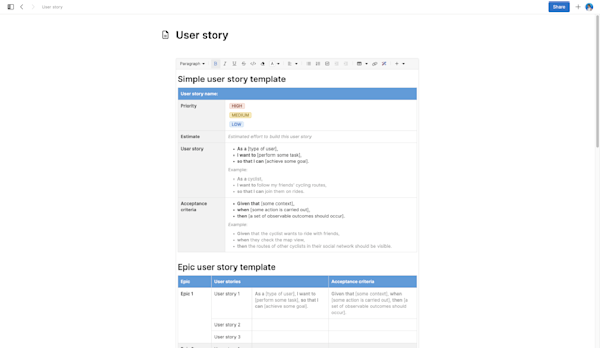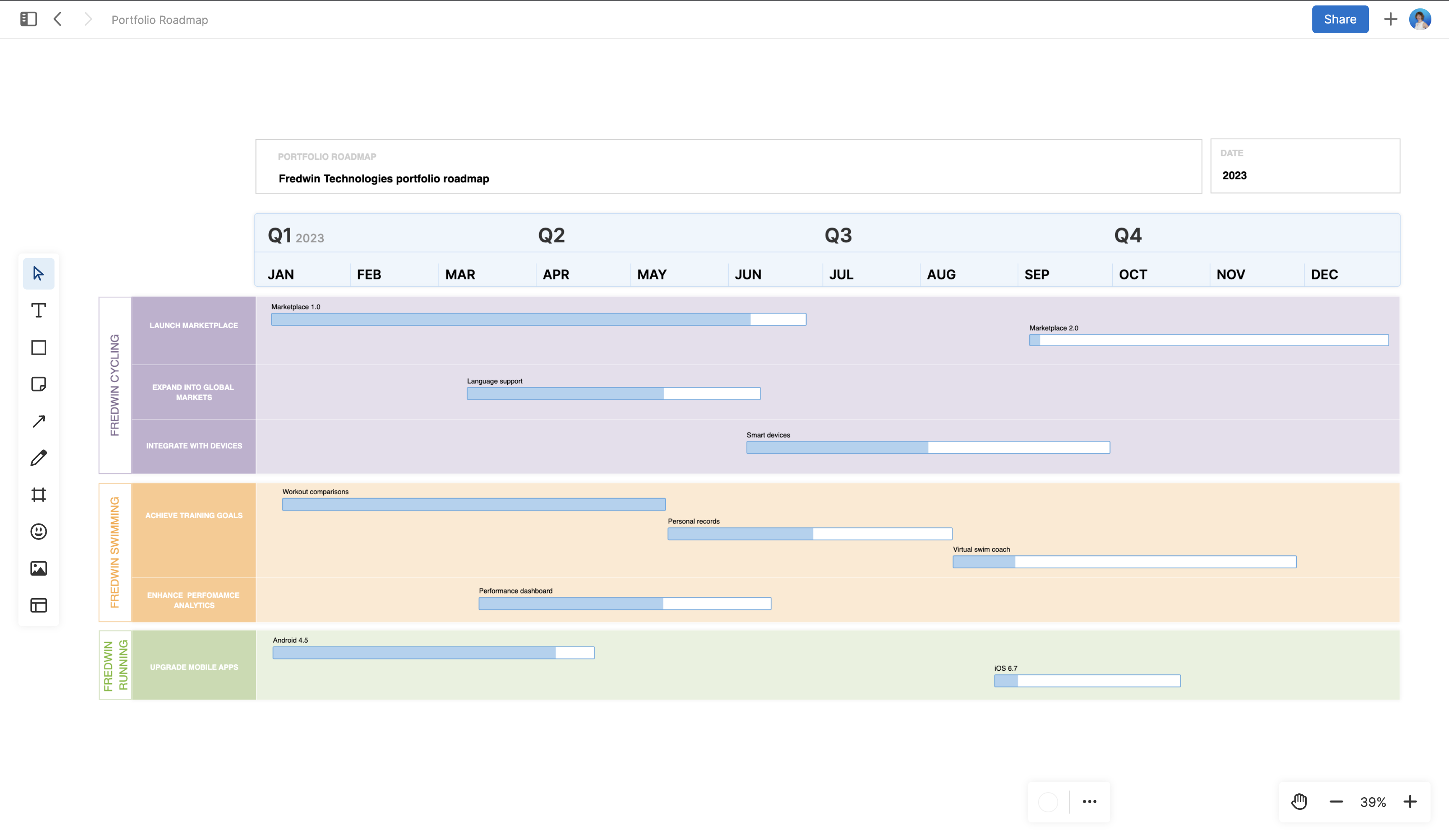What is product portfolio management?
The essentials of product portfolio management for growing companies
Last updated: July 2025
What is product portfolio management? Product portfolio management is the process of strategically planning what products to develop, deliver, maintain, and sunset. It enables companies to increase market share, expand into new markets, mitigate risk, and allocate resources effectively. |
Few meaningful companies make or sell just one thing. Diversification is a powerful way to sustain a business through shifting markets, changes in customer preferences, and even seasonality. A company's product portfolio is one of its most important strategic assets.
Think of a company's product portfolio like a restaurant menu. One establishment might offer a unique selection of dishes that appeal to a specific group. Others might prioritize variety and include many cuisines that will entice different types of people. And others still might change the menu frequently based on the availability of fresh ingredients.
One approach is not necessarily better than the other. But for the restaurant to be successful, all of the items that it serves should be cost-effective to prepare, consistently ordered by diners, attract new customers, and keep regulars coming back.
Hungry for more? Jump ahead here:
What is a product portfolio?
A product portfolio is the totality of products and services that a company offers (whether hardware, software, or services) in support of its strategic business goals.
A product portfolio may comprise related or very diverse offerings. This could include many different brands that a company owns, each with its own product lines and products. Or, it might be a collection (or "suite") of complementary products. Individual products within the product portfolio may serve different markets and have different growth rates, with underlying strategies to address dominant, declining, and emerging products.
Brand portfolio vs. product portfolio
You may have heard people refer to a "portfolio of brands." Is that the same as a product portfolio? Not quite.
A brand encompasses an overall emotional response, experience, or reputation perceived by customers. A very large company might have many brands, either launched by the company or gained through acquisition. The brands may be very distinct (operating as standalone entities) or cohesive.
For a consumer company, consider Coca-Cola. The parent company holds not just the namesake cola brand, but many others (including Odwalla, Minute Maid, and Schweppes).
For a technology company, consider Apple. The parent company has a portfolio of products under its namesake brand, but it also owns other brands (such as Beats, Shazam, and Siri).
Each brand within the brand portfolio may have its own portfolio of products. For example, Minute Maid offers different types of beverages, such as juices, lemonades, and aguas frescas. Products can be further categorized by delivery system, including bottles, cans, cartons, and frozen concentrates.
Product portfolio vs. product family vs. product line
You may have also heard people refer to a "product suite" or a "family of products" and wondered what the difference is between those and a product portfolio. Some of it is semantics. But there are nuances worth understanding.
Product portfolio: A product portfolio refers to the products offered by a company, sometimes divided by external revenue-driving products and those created for internal use.
Product family: A product family is a group of standalone products that have different market categories, use cases, and functionality, but provide related value to customers when used together (also referred to as a "product suite").
Product line: A product line is a group of products that are within the same market category and fulfill the same baseline use case, but with variations for different customer types.
Related:
What is an example of a company product portfolio?
Product portfolio expansion is a direct reflection of company strategy. Start with one product and build a portfolio around it? Serve one market or many? Focus on developing proprietary tech or grow by acquiring other companies?
The examples below show how two very different companies — Starbucks and Aha! — approached building out a product portfolio.
Starbucks and its approach to product portfolio management
The global coffee chain has a multifaceted product line with a variety of distribution channels. Starbucks sells its own coffee and tea products and licenses its trademarks. As the company grew, it expanded its product portfolio to meet existing demand and reach new customers.
Not all of these launches or acquisitions were successful. For example, the company acquired a record label called Hear Music, which lasted for eight years. Its CDs were sold in Starbucks stores. As consumer preferences shifted to streaming services, Starbucks shuttered the label and announced a partnership with Spotify.
The Starbucks Verismo single-cup coffee maker launched in 2012, but was discontinued in 2020. The company could not compete with the wide variety of single-cup makers and chose instead to focus on producing Starbucks pods that could work with any machine.
There are four basic product lines under which Starbucks offers products it created and makes, as well as products from brands it acquired. The table below is by no means exhaustive (it does not include companies acquired and then shuttered), but it gives you a glimpse at how the company structures its portfolio of products.
Product type |
|
|
|
|
Starbucks products |
|
|
| |
Acquisitions |
|
|
Aha! and its approach to product portfolio management
How could we resist the chance to include ourselves? Today, Aha! offers a complete suite of software for product development. But when the company was founded in 2013, we launched with one product: a product roadmap tool. Rather than grow our product portfolio through mergers and acquisitions (M&As), our strategy has been to develop new tools that give our customers everything they need for a successful and holistic approach to product development.
First, we expanded upon the core roadmap offering to include functionality to address different use cases, such as IT and business teams, with purpose-built workspace types that were introduced in 2019 and 2020.
After the workspace introductions, we added a rapid succession of new products to the suite between 2020 and now. Often, these products were a direct response to our own team's need for enhanced tooling that would improve product development processes.
We also saw the need for professional services to help our customers get the most from our software and to deepen their product management skills. Aha! Academy offers learning paths, including certification courses.
Now, the Aha! software suite includes everything you need to imagine, plan, build, and deliver lovable products, including tools for strategic planning, innovation and creative collaboration, idea management and user feedback, product discovery, release management, agile development, knowledge management, and analysis.
Aha! software products |
|
Aha! professional services |
|
What exactly is product portfolio management?
As you know by now, product portfolio management is the process of managing a company's product portfolio. Management includes analyzing, measuring, and optimizing how existing products contribute to broader business goals. It also involves identifying opportunities to expand the product portfolio to include new offerings and creating a product portfolio roadmap.
Product portfolio management is essential to answering these questions:
Do all of the products in the product portfolio deliver value to customers and to the company?
Is the product portfolio more valuable than the sum of its parts?
How do the core and non-core products perform?
Do low performers benefit the business in other ways?
What opportunities are there to add new products or reach new markets?
Some organizations center their product portfolio management work around product line extension. This is where you start with a flagship product and spin off supporting offerings that can be purchased together or alone. Others focus on assembling an assortment of products targeted at different markets. This type of product portfolio expansion strategy relies on new product development or M&As.
For those of us working in the fiercely competitive tech space, M&As are quite common. Startups may be able to develop disruptive technologies or solutions, but struggle to compete on a global scale against industry behemoths — unless they raise significant capital. Big players often find it more cost effective to absorb these smaller companies than to invest in the research and development required to enter new markets and launch new products. (And for some fledgling businesses, acquisition is the desired exit strategy.)
What is a product portfolio strategy?
A product portfolio strategy is a company's theory for how it will increase market share and revenue. There are two basic trajectories: incremental and disruptive growth.
Incremental growth typically focuses internally. Companies look for ways to expand market share or reach small adjacent markets. Existing products may be enhanced or repackaged. The investment in developing this type of "new" product is relatively low.
Disruptive growth typically focuses externally. Companies look for expansive ways to disrupt existing markets or create new ones. Product development teams seek to create or acquire new technology. The investment in developing these products is typically high.
Conducting a comprehensive analysis is usually the first step in developing a robust product portfolio management strategy. Most organizations start with market and customer research and a basic SWOT analysis:
Customer research
Customer research is the process of gathering feedback and insights from current or prospective customers. The data can be qualitative, quantitative, or a mix of both. This is useful for understanding customer motivations, struggles, and needs.
Access customer research templates
Competitor analysis
Competitor analysis captures all types of products available in a specific market — including direct and indirect competitors. Score both the company and the product functionality. This is useful for understanding the overall market landscape.
Access competitor analysis templates
SWOT analysis
SWOT stands for "strengths, weaknesses, opportunities, and threats." The goal is to map out internal factors (strengths and weaknesses) and external factors (opportunities and threats). This is useful for evaluating the current product portfolio and pinpointing differentiation.
Access SWOT analysis templates
More mature organizations will want to delve deeper. Over the years, several matrices have emerged to help organizations do this.
Growth share matrix
Originally developed by Boston Consulting Group (BCG) founder Bruce Henderson in 1970, this basic tool plots out existing or potential products based on profitability. The category labels are somewhat crude (cash cows and dogs?), but quickly convey potential opportunity.
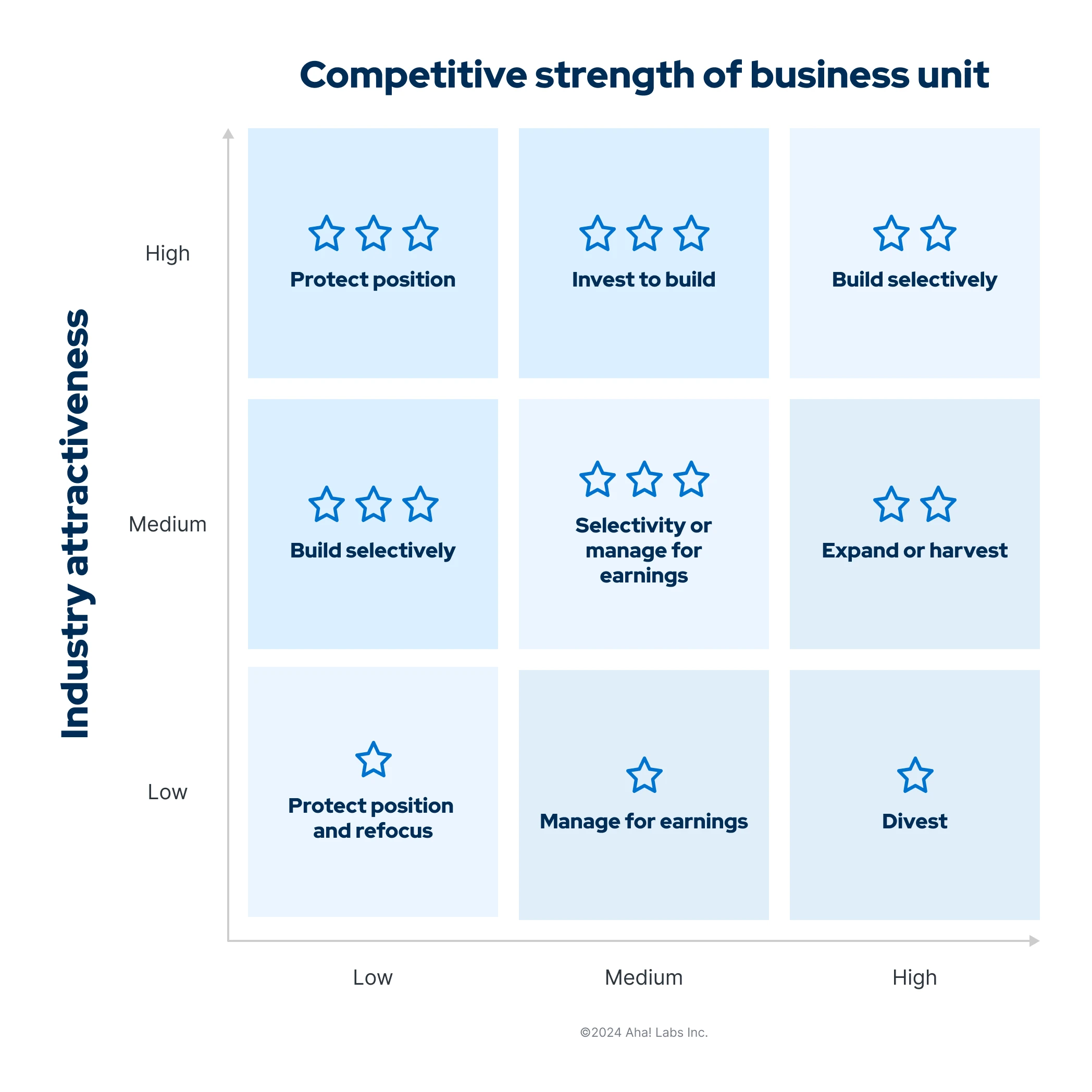
Stars
Established winning strategies
Deserving of the most investment
Requires close attention for true innovation
Cash cows
Established successful strategies
Steady earners
Operational efficiency is critical
Dogs
Established lagging strategies
Product in decline
Requires transformation or exit
Question marks
New strategies
Could grow into stars
Investment should be vetted
GE-McKinsey matrix
This matrix emerged shortly after BCG came out with the growth share matrix. GE hired consulting firm McKinsey to help manage its massive portfolio of (often unrelated) products. The resulting nine-box matrix evaluates offerings based on the overall attractiveness of the market and the product's competitive strength within it. The goal is to evaluate and prioritize investments in one view while capturing the nuance and context specific to that product.
